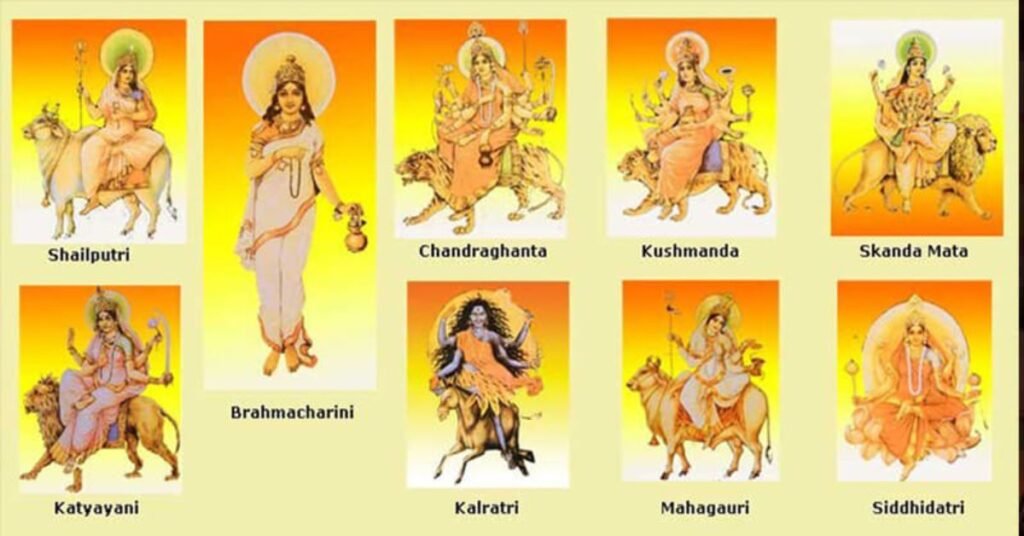Navratri is a Hindu festival celebrated over nine nights, dedicated to the worship of the nine forms of Goddess Durga. Each day, a different form of the Goddess is venerated, along with a specific color associated with that day. Here, I will provide you with information about each of the nine Devi forms, their associated colors, and some details about their significance.
Day 1 –
Shailaputri (ORANGE): Shailaputri is the first form of Goddess Durga. She is often depicted riding a bull and symbolizes the power of the Earth. Worshipping Shailaputri is believed to bring strength and stability.
Day 2 –
Brahmacharini (WHITE): The second day is dedicated to Brahmacharini, who represents the unmarried form of Goddess Parvati. She is a symbol of dedication, penance, and devotion. Devotees seek her blessings for peace and prosperity.
Day 3 –
Chandraghanta (RED): Chandraghanta is the third manifestation and is known for her fierce appearance with a half-moon-shaped bell on her forehead. She represents bravery and the removal of obstacles.
Day 4 –
Kushmanda (ROYAL BLUE): Kushmanda, the fourth form, is associated with the creation of the universe. She is often depicted with multiple arms holding various weapons and symbols of power. Worshippers seek her blessings for energy and vitality.
Day 5 –
Skandamata (YELLOW): Skandamata is the mother of Lord Kartikeya, and her name means “Mother of Skanda.” She is a symbol of motherly love and protection.
Day 6 –
Katyayani (GREEN): Katyayani, the sixth form, is believed to have manifested to defeat the demon Mahishasura. She represents the fierce and courageous aspect of the Goddess.
Day 7 –
Kalaratri (GREY): Kalaratri is the fierce, dark form of Goddess Durga. She is associated with destruction and liberation from ignorance. Worshipping her is believed to protect devotees from negative energies.
Day 8 –
Mahagauri (PURPLE): Mahagauri is the eighth form, symbolizing purity and peace. She is often depicted in a white sari and is believed to grant forgiveness and self-purification.
Day 9 –
Siddhidatri (PEACOCK GREEN): Siddhidatri is the ninth and final form, bestowing blessings and supernatural powers to her devotees. She is a symbol of knowledge and wisdom.
Navratri is a time of devotion, fasting, and vibrant celebrations. The nine days are dedicated to seeking the blessings and grace of the different forms of Goddess Durga, each representing unique qualities and powers. Devotees often observe fasts, perform rituals, and participate in dance forms like Garba and Dandiya, making Navratri a festival of both spirituality and joy. The associated colors for each day add to the visual splendor of this festival, creating a captivating and culturally rich celebration.
